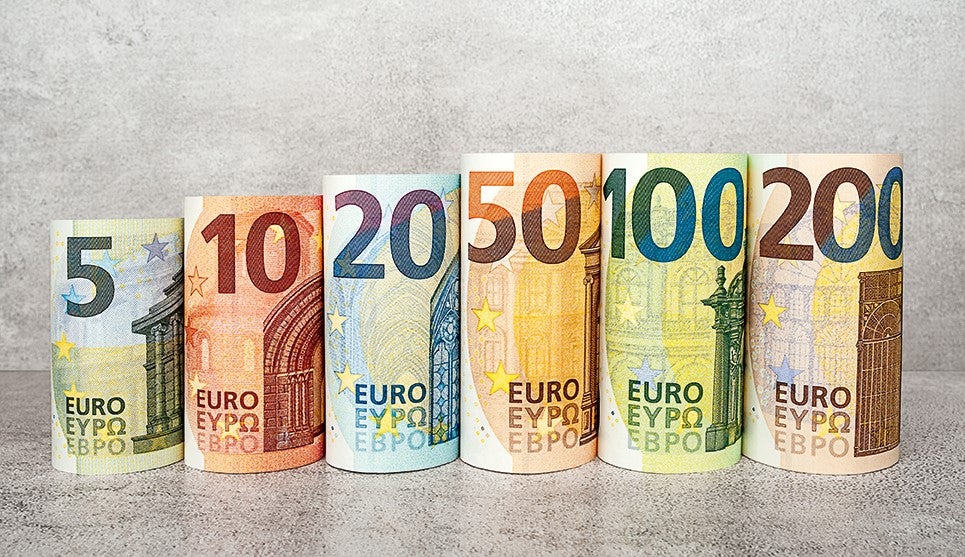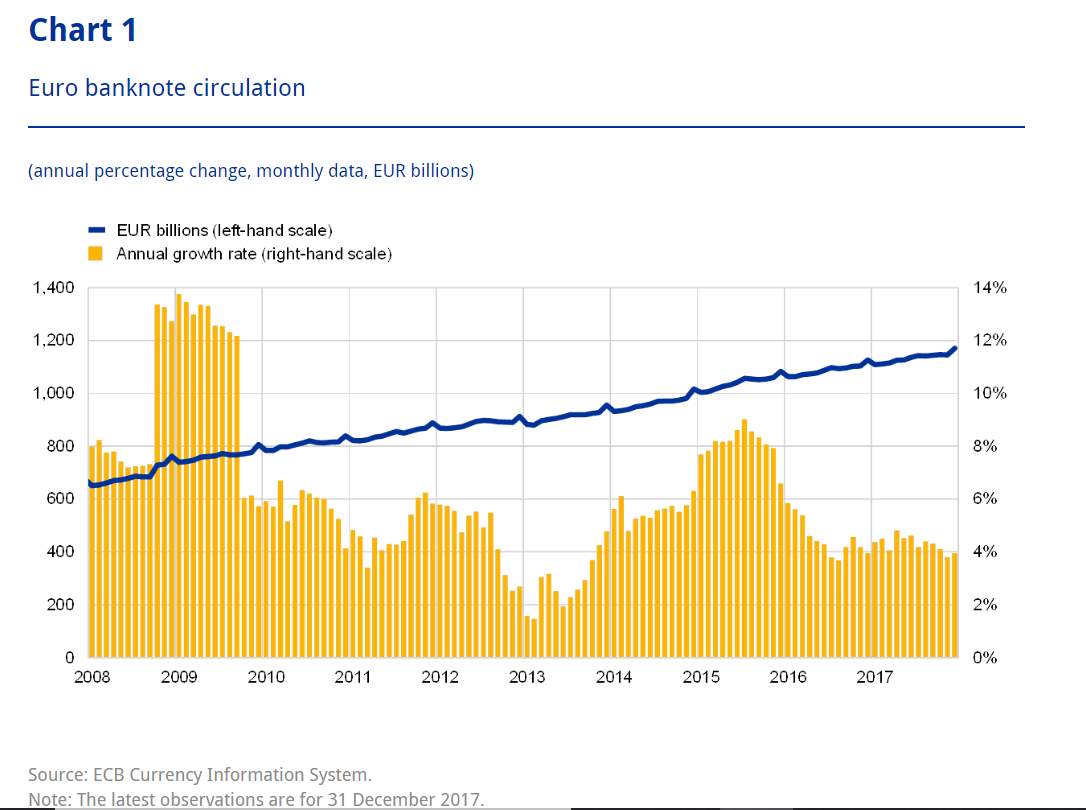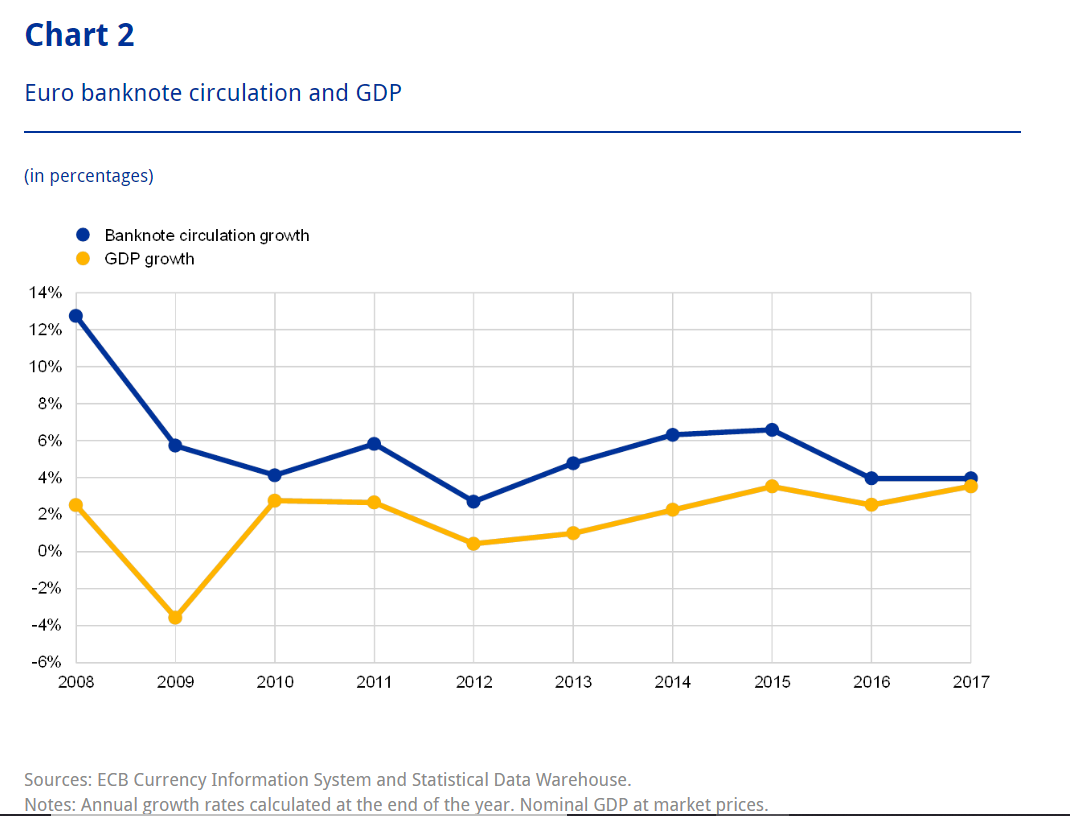
Like period of uncertainty, the covid-19 pandemic has brought about a significant growth in the demand for banknotes. Mohamed Dabo reports on a trend that is concurrent with the boom in digital transactions.
Cash demand in Europe surged by €50bn in the last five months, growing from €1.29tn at the beginning of January to €1.34tn in the first week of May, according to data gathered by investing and trading platform BuyShares.
The value of euro banknotes in circulation grew continuously during the period from January 2008 to December 2017, with an average annual growth rate of 6.1%, has revealed the European Central Bank.
At the end of 2017, the total value of euro banknotes in circulation was €1,171bn, with an annual growth rate of 4.0%. Seasonal patterns in circulation can be observed especially during summer holidays and the Christmas period.
The ratio of banknotes in circulation to nominal gross domestic product (GDP) has increased from 7.9% to 10.5% over the past ten years, indicating that, while in line with the GDP growth trend.

How well do you really know your competitors?
Access the most comprehensive Company Profiles on the market, powered by GlobalData. Save hours of research. Gain competitive edge.

Thank you!
Your download email will arrive shortly
Not ready to buy yet? Download a free sample
We are confident about the unique quality of our Company Profiles. However, we want you to make the most beneficial decision for your business, so we offer a free sample that you can download by submitting the below form
By GlobalDataDrivers of the increase in cash
The value of euro banknotes in circulation has been growing faster than the overall economy and that other factors have therefore been contributing to this increase.
Adoption of the Euro by new countries
During the period under review, the euro was successively adopted by Cyprus and Malta (2008), Slovakia (2009), Estonia (2011), Latvia (2014) and Lithuania (2015)
The effects of the euro’s introduction in these countries on the total number and value of euro banknotes in circulation has, however, been very limited.
Two months after their respective introductions of the euro, these countries’ contributions to the total value of euro banknotes in circulation ranged between 0.03% and 0.35%.

Apart from the introduction of the euro in the aforementioned six Member States, euro banknote circulation over the period from 2008 until the end of 2017 was characterised by four main events.
The Lehman Brothers crisis
Between January and September 2008, the average annual growth rate of the value in circulation was 7.6%.
Following the bankruptcy of Lehman Brothers on 15 September 2008 the net issuance of euro banknotes increased by €43.7bn in October, of which net shipments of euro banknotes to regions outside the euro area amounted to €13.7bn, the highest value since the introduction of the euro.
The sovereign debt crisis
Autumn 2009 marked the beginning of the European sovereign debt crisis, whose effects on banknote demand lasted until the end of 2013.
In an environment of uncertainty on the financial markets, lack of trust in government debt and low GDP growth in the euro area, demand for euro banknotes decelerated and the annual growth rate of the value in circulation reached its all-time low of 1.5%.
Nevertheless, for the entire period from October 2009 to the end of 2013, the annual increase in the value in circulation was still relatively strong, averaging 4.6%.
The economic recovery in the euro area
Together with low interest rates (see Box 3), this resulted in an acceleration in banknote circulation growth from the beginning of 2014.
In December 2014, the depreciation of the Russian rouble against the euro led to a remarkable increase in purchases of euro banknotes from regions outside the euro area, primarily Russia.
Net shipments in December 2014 amounted to €6.5 billion, marking the highest monthly volume observed since the 2008‑2009 financial crisis. The average annual growth rate during the period from January 2014 to January 2016 was 6.8%.
The Governing Council decision on the €500
On 4 May 2016 the Governing Council decided to discontinue production of the €500 banknote with immediate effect and to stop its issuance around the end of 2018.
The circulation of €500 banknotes has continuously declined since the first discussions on the topic were reported in the media in February 2016, although this decline has levelled off since April 2017.
At the end of 2017 the value of €500 banknotes in circulation amounted to €256.8 billion, compared to €306.8 billion at the end of 2015. At the same time, the demand for €200, €100 and €50 denominations increased more than in previous years.
This increase to a large extent offset the decline in €500 circulation. On average, from February 2016 to December 2017 annual circulation growth was 4.4%







